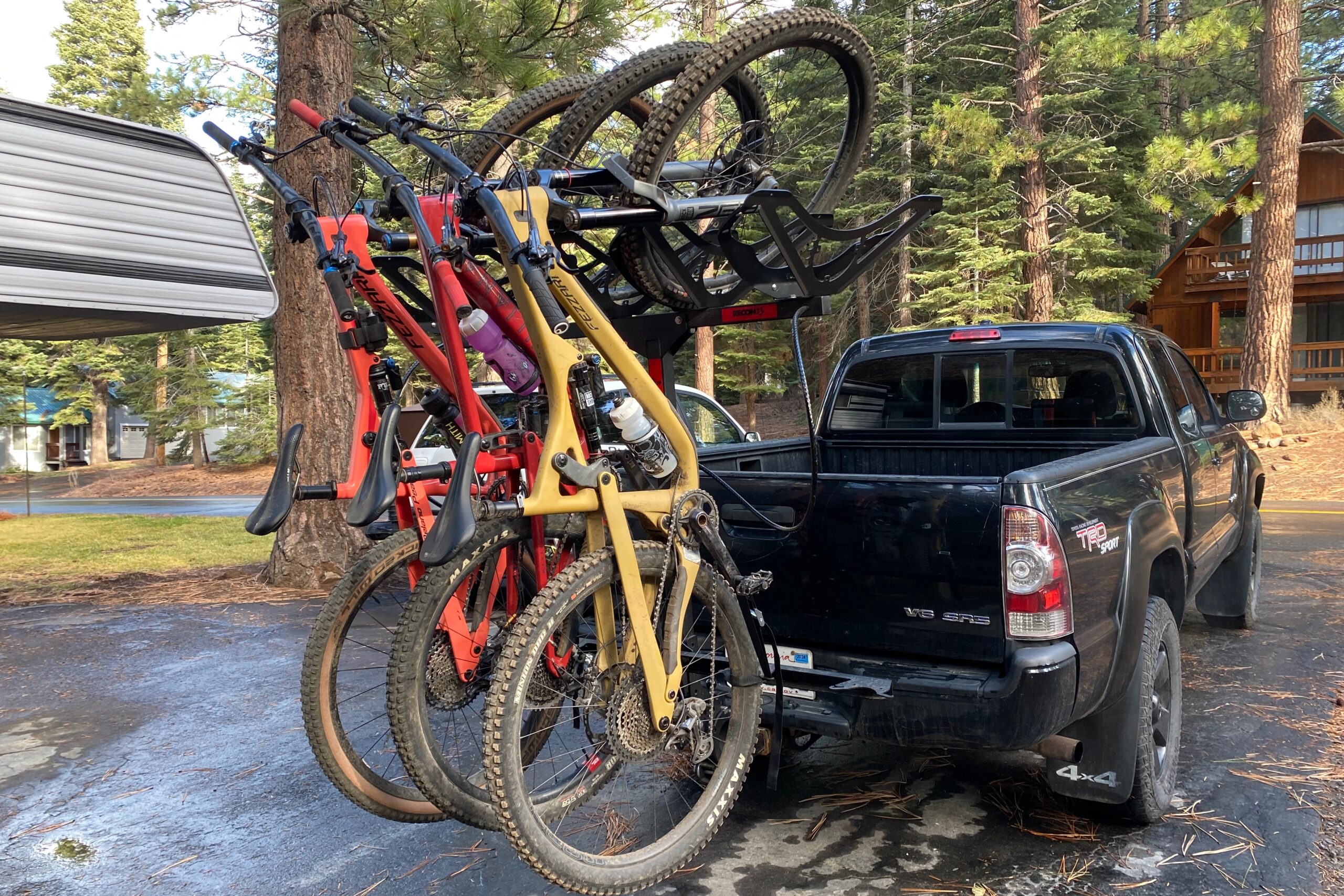Last year, we announced the launch of the then-new 1Up Recon 5 and Recon 6 vertical hanging hitch bike racks. After acquiring Recon Racks in 2021, it didn’t take long for 1Up to develop the new Recon models based on the original but with some notable changes. While functionally about the same, they look slightly different with beefy steel wheel baskets and a revised lower crossbar and rear wheel attachment system. 1Up also moved the production of the Recon racks in-house to their facility in Wisconsin, and they are made entirely in the USA.
The 1UP Recon racks have been on the market for over a year now, and I’m slowly but surely seeing more of them in the wild near my home in the mountains just north of Lake Tahoe, CA. Having personally used or tested nearly every mid to high-end bike rack on the market over the years, I was eager to try out the Recon to see how it compares to similar options and if it lives up to 1Up’s reputation for making some of the best and most durable racks in the business.
I’ve been using a 1Up Recon 5 for the past six months for extended road trips, weekend campouts, shuttle runs, and daily trips to and from the trailhead. I’m well past first impressions and I feel I’ve got enough experience with the Recon to say that it’s the most durable and best vertical carry hitch rack that I’ve ever used so far.
Getting started
1Up USA only sells their racks direct to the consumer, so you’ll need to jump on their website to order one. The first decision you’ll need to make is whether to get the Recon 5 or Recon 6, which carry 5 or 6 bikes and cost $1,200 or $1,400, respectively. While ordering, you’re also given the option to choose between standard, fat bike, and kids wheel baskets, so you can mix and match to get the setup you want. The baskets are also sold individually for $149 should your needs change. A handful of accessories are also available, but more on that later.
The assembled weight of the Recon 5 is a whopping 92 lbs (add about 10 for the Recon 6), so the shipped weight is right around 100 lbs. Fortunately, it comes in two boxes, and ground shipping is included in the purchase price. Unboxing the Recon reveals a relatively involved assembly process, as it comes completely disassembled, even the wheel baskets are in two pieces. Unfortunately, I neglected to take any pictures at this stage, but you’re essentially bolting the entire thing together from the hitch bar up.
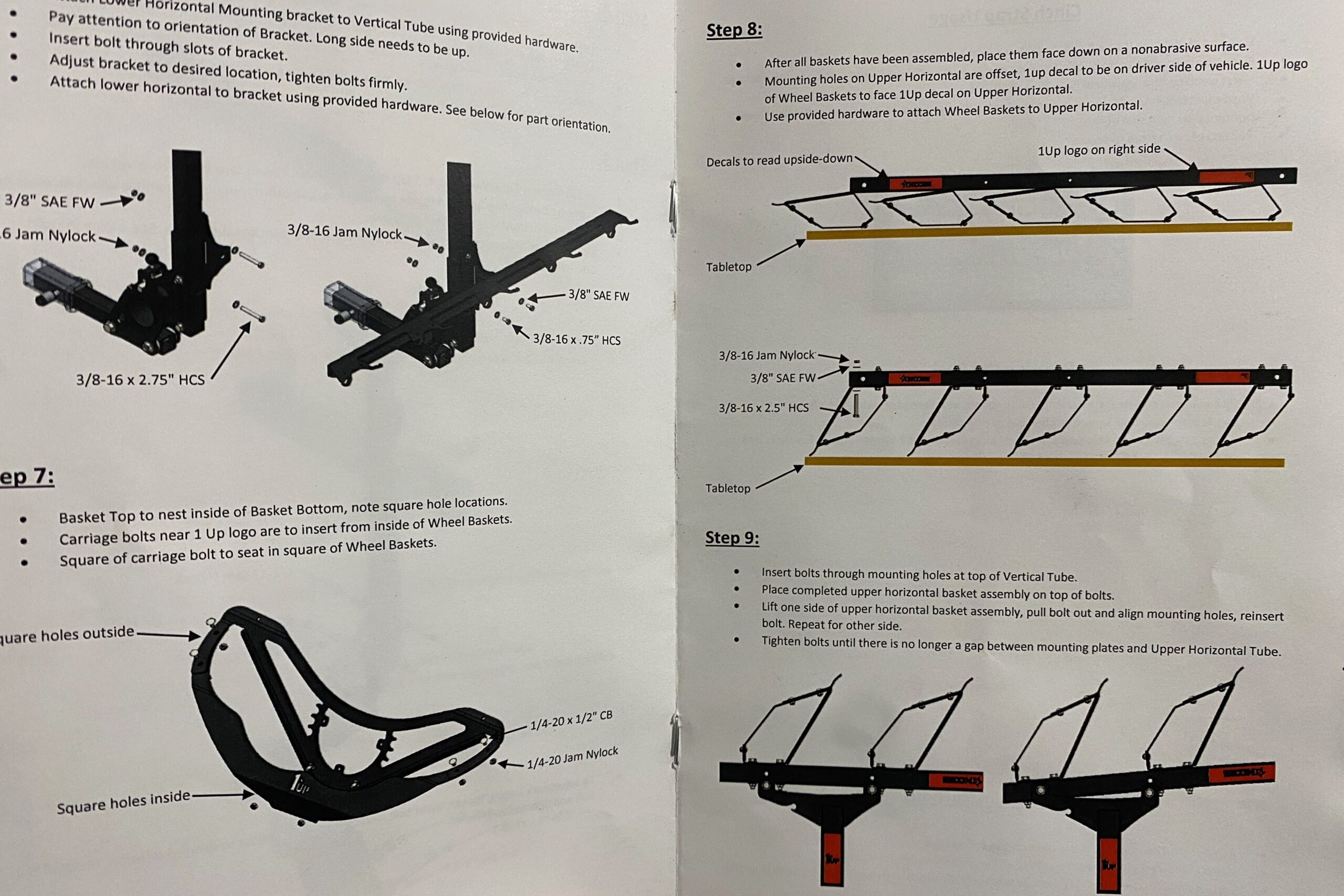
1Up includes detailed printed instructions, which can also be found on their website, that go through the process step by step. It isn’t necessarily difficult, but it does take a bit of time to get the whole thing together. By following the directions carefully, however, it goes smoothly and ensures you don’t mess up and have to do anything over again. I won’t bore you with the details but just know that you’ll want to set aside a couple of hours if you’re putting one of these together yourself. The good news is that all of the holes line up perfectly and a socket wrench will help make quick(er) work of all the bolts that need to be tightened, there’s quite a few. Of note: there are three holes in the bottom of the wheel baskets, two of which are on the same side and allow you to mount the baskets straight or at a slight angle. I chose the slight angle for whatever reason, and I’m sticking with it.
Once the rack is together, you have the option to make some adjustments to dial it in for both vehicle and ground clearance. The vertical mast of the rack can be moved up or down to add or decrease ground clearance to suit your specific vehicle or maintain a departure angle for off-road use. The hitch bar also has multiple holes drilled in it so you can adjust the position of the rack in relation to the back of the vehicle if needed. I used the Recon on my ’09 Toyota Tacoma that had either a camper shell or my Six-Pac cab over camper on the back (I had just taken the camper off before these photos), and I found the middle-height position and the farthest out hitch position worked best for my needs.
Installation
One of the primary challenges with the 1Up Recon, and all racks of this style, is that it can be a bear to install and remove. At 92 lbs, just picking it up is no simple task, and when you factor in its unwieldy shape, it is pretty awkward to carry from wherever you’re storing it to your vehicle. This is not the type of rack you want to put on and take off regularly, instead, we’d recommend leaving it on for extended periods whenever possible.
Once you slide the hitch bar into the receiver and line up the holes, a beefy threaded hitch pin needs to be cranked down tight. During the assembly, an anti-wobble insert was placed inside the hitch bar, and the hitch pin threads through it to pull the hitch bar tight against the side of the receiver to remove side-to-side wobble. While this honestly works fairly well, we found that an affordable U-bolt style anti-wobble hitch cam that I already had (like this one on Amazon for $10) was a nice addition to completely stop it from wobbling, both side to side and up and down.
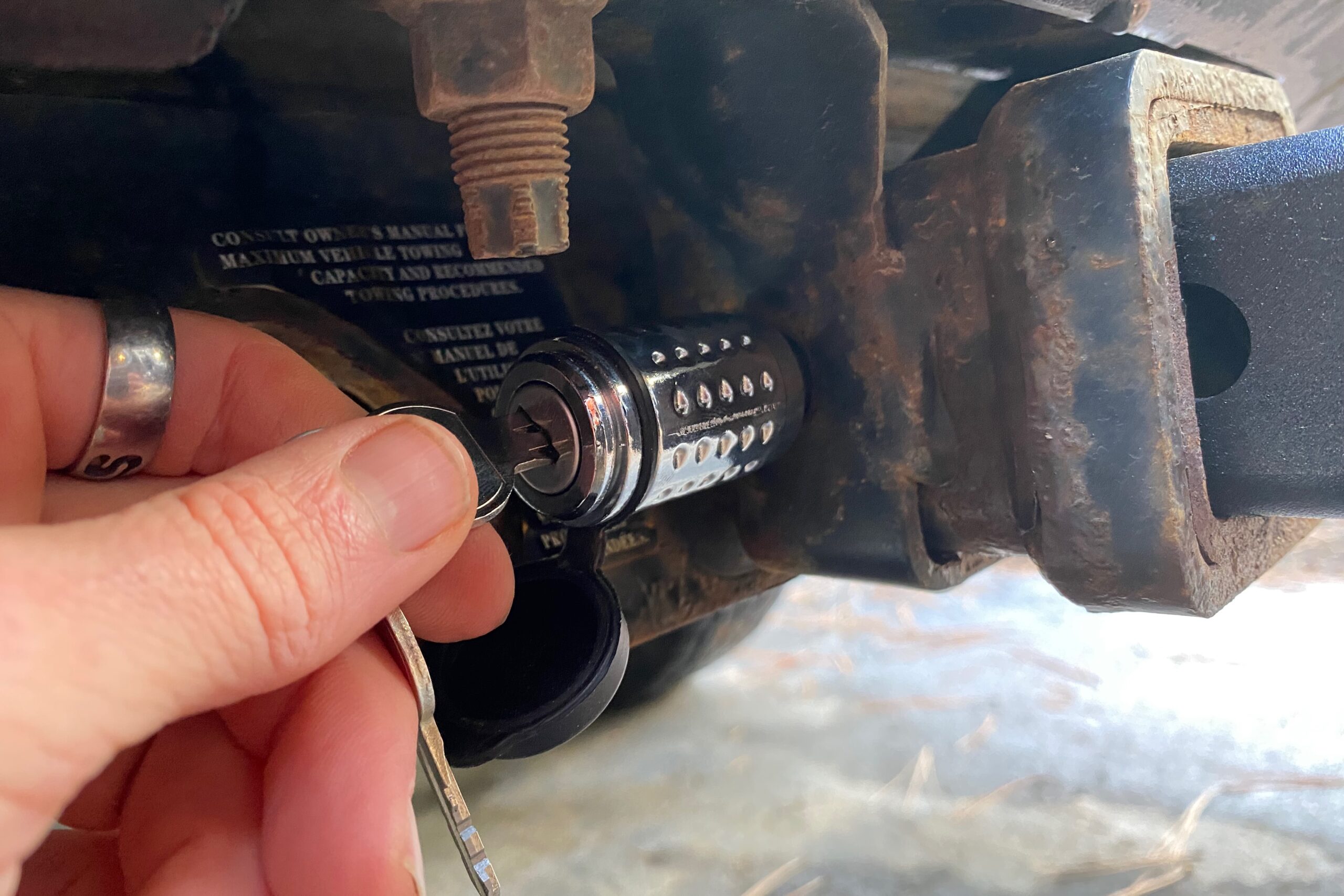
To help keep your expensive rack secure, the Recon also comes with a hitch pin lock. The lock pod is made of metal and has a rubber dust cover to keep road debris and moisture from jamming up the works. Unlike most hitch pin locks, this one threads onto the end of the hitch pin as you turn the key, and it has a very robust and secure feel.
Loading
Loading bikes onto the Recon is quite simple with large, open-wheel baskets that cradle the front wheel and only make contact with the tire. Of course, you need to lift the front end of the bike high enough to get the front wheel into the basket, but they easily slot right in there, and unlike similar racks that hold bikes by the fork crown, there’s no lining up the crown into narrow slots, and the basket design accommodates bikes with rigid forks (gravel, road, etc.) without the need for adaptors.
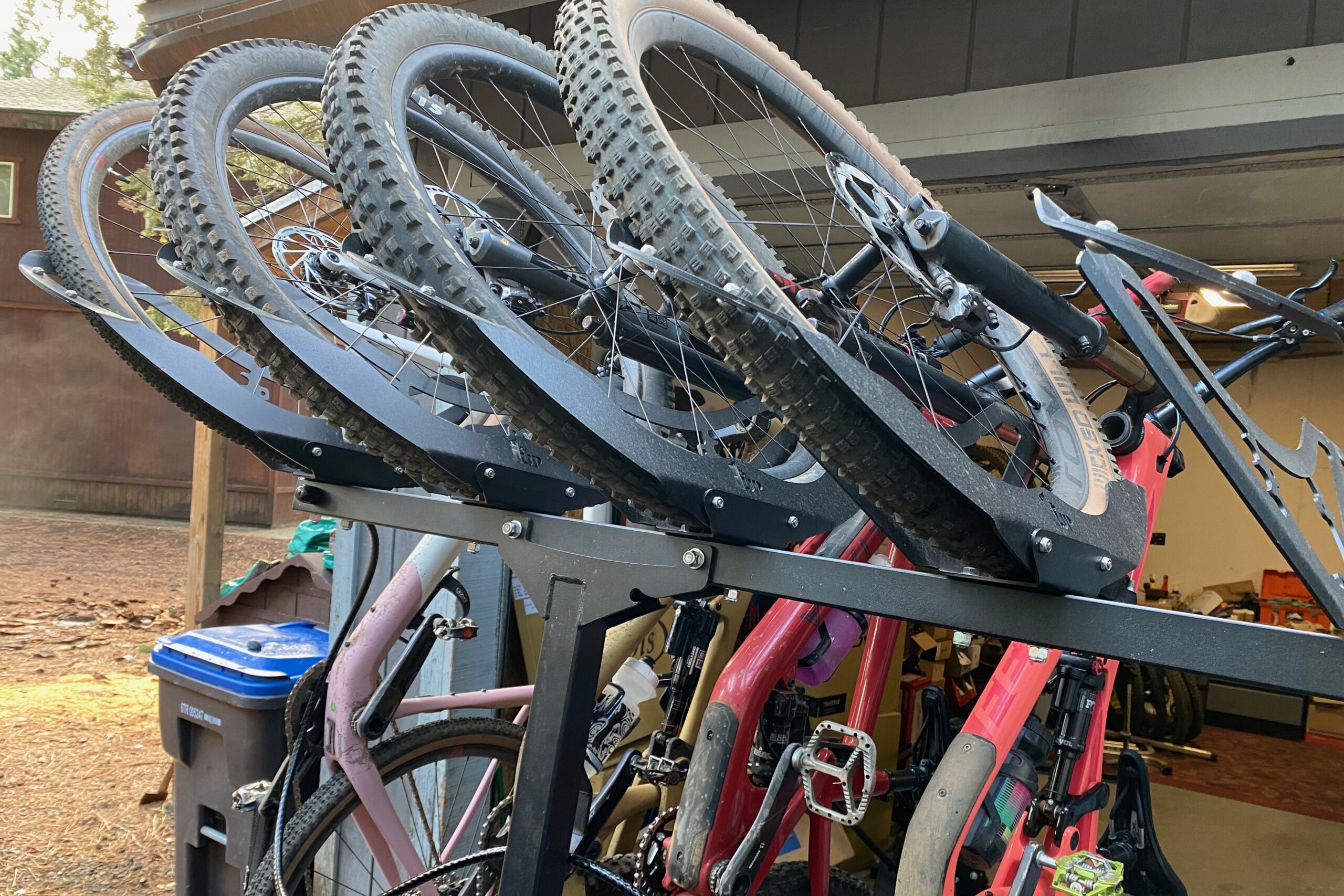
Like other vertical racks, there’s a very short learning curve to loading them if you’ve never done it before but it quickly becomes second nature. It helps to have one hand on the fork and the other on the seat tube as you lift the front end and place the front wheel in the basket. It also helps to load the bikes from left to right (and unload right to left) to avoid handlebar interference during the loading and unloading process. Depending on the number of bikes you’re carrying, you’ll also need to consider their position on the rack. If, for example, you’re only carrying two bikes, it’s best to position them in the cradles closest to the vertical mast.
Where the Recon differs from most other vertical racks on the market is the rear wheel attachment system. Most other brands have a bungee, rubber strap, or short length of rope that holds the rear wheel tight against the lower crossbar, but the Recon uses a webbing cam strap that captures both the wheel and the pedal. The strap loops over the drive side pedal (it also works just fine on the non-drive side in our experience) and down to the rear wheel “cradle” where it passes over the rear rim to connection points on both sides before cinching it tight. After some initial skepticism, I grew to appreciate this system, but it has benefits and drawbacks, which I’ll explain.
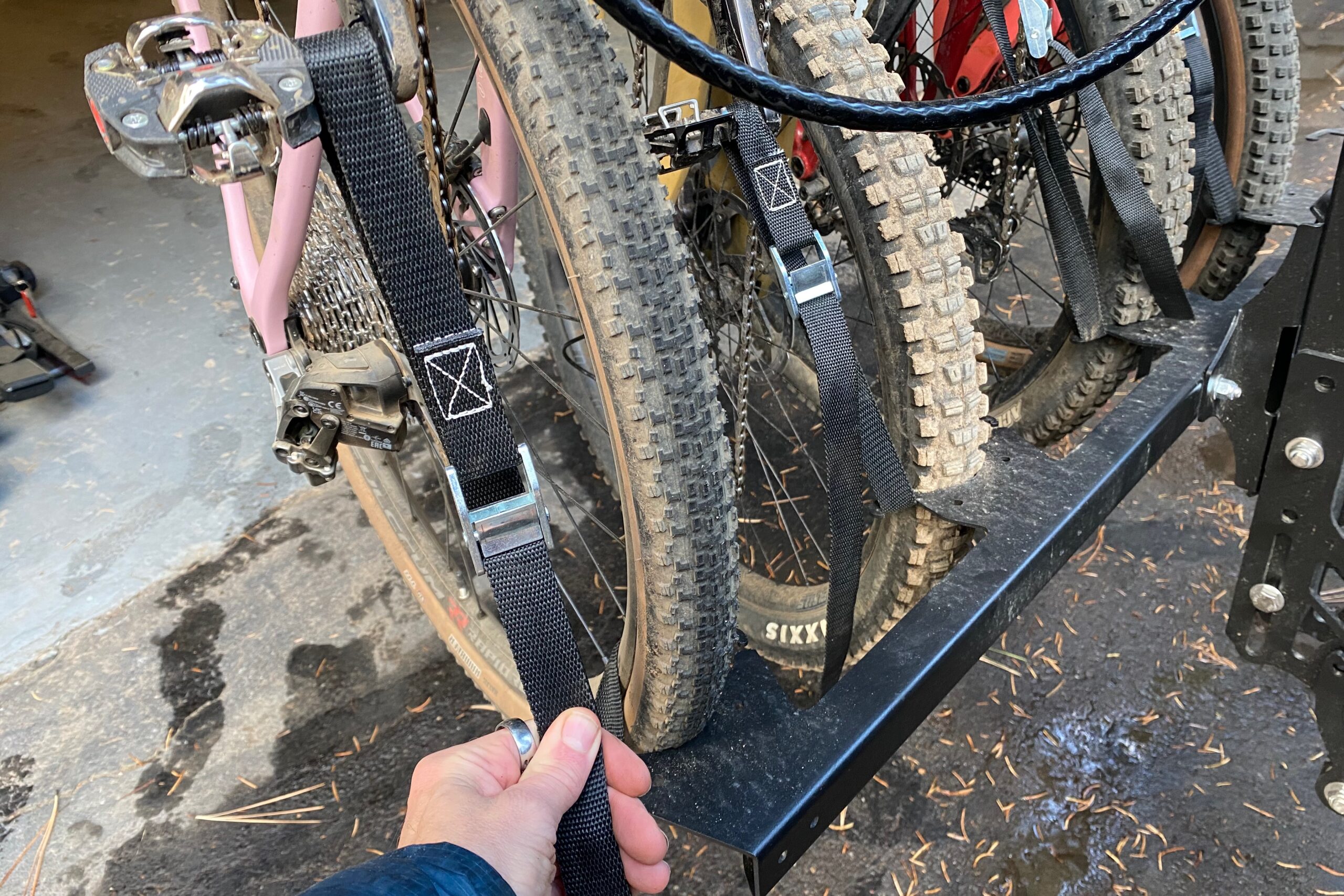
The primary benefit of the Recon’s unique rear wheel attachment is the impressive security and stability of the bikes in transit. It holds the rear wheel firmly against the rear wheel cradle while simultaneously keeping downward tension on the bikes. This essentially eliminates the possibility of the bikes getting bounced off the rack if you hit a speed bump going too fast or you’re clambering up some rough dirt road. It also ensures that your cranks and pedals don’t move and interfere with each other, or worse, scratch up your buddy’s frame. Cam straps like these are also easy to find at hardware or sporting goods stores, so they’re easily replaced if they wear out or you happen to lose one.
Now for the drawbacks. Looping the strap around the pedal and rear wheel cradle takes a little more time than simply stretching a bungee over the wheel. Realistically, it’s only a few extra seconds once you get your system down, but it isn’t nearly as quick and easy. There’s a “right way” to do it that 1Up details in this short instructional video, but it still takes a little getting used to before you’ve got it totally dialed. Plus, your friends will be super confused when they try to do it the first few times. The other, and perhaps more glaring, drawback to this system is that the straps are not attached to the rack in any way and there’s no obvious way to store them on the rack itself. This means you’ve got 5 or 6 straps to stash somewhere in your vehicle, keep track of, and fish out every time you use the rack.

On the Road
In use, the 1Up Recon 5 is impressively stable and inspires confidence in its ability to hold the bikes securely no matter where you decide to go. It is a vertical rack, of course, so there is a tiny bit of side-to-side movement visible but less than I’m used to seeing with other models. Additionally, the bikes are held onto the rack better as the rear wheel strap system really locks them down. The bikes themselves hardly move side to side and they don’t bounce vertically whatsoever.
The 1Up Recon racks are rated for off-road use, and while I haven’t done any proper rock crawling with mine, I’ve taken it down some dirt and gravel roads ranging from washboard to moderately rough. It has handled that very well, and, again, the rack and the bikes appear to be more stable than other vertical racks I’ve used. As mentioned previously, the vertical mast can be adjusted for additional clearance should you need it, although this does require tools and a little bit of time. And if you’re driving off-road with any regularity, you’ll probably want to check your bolts a little more frequently.
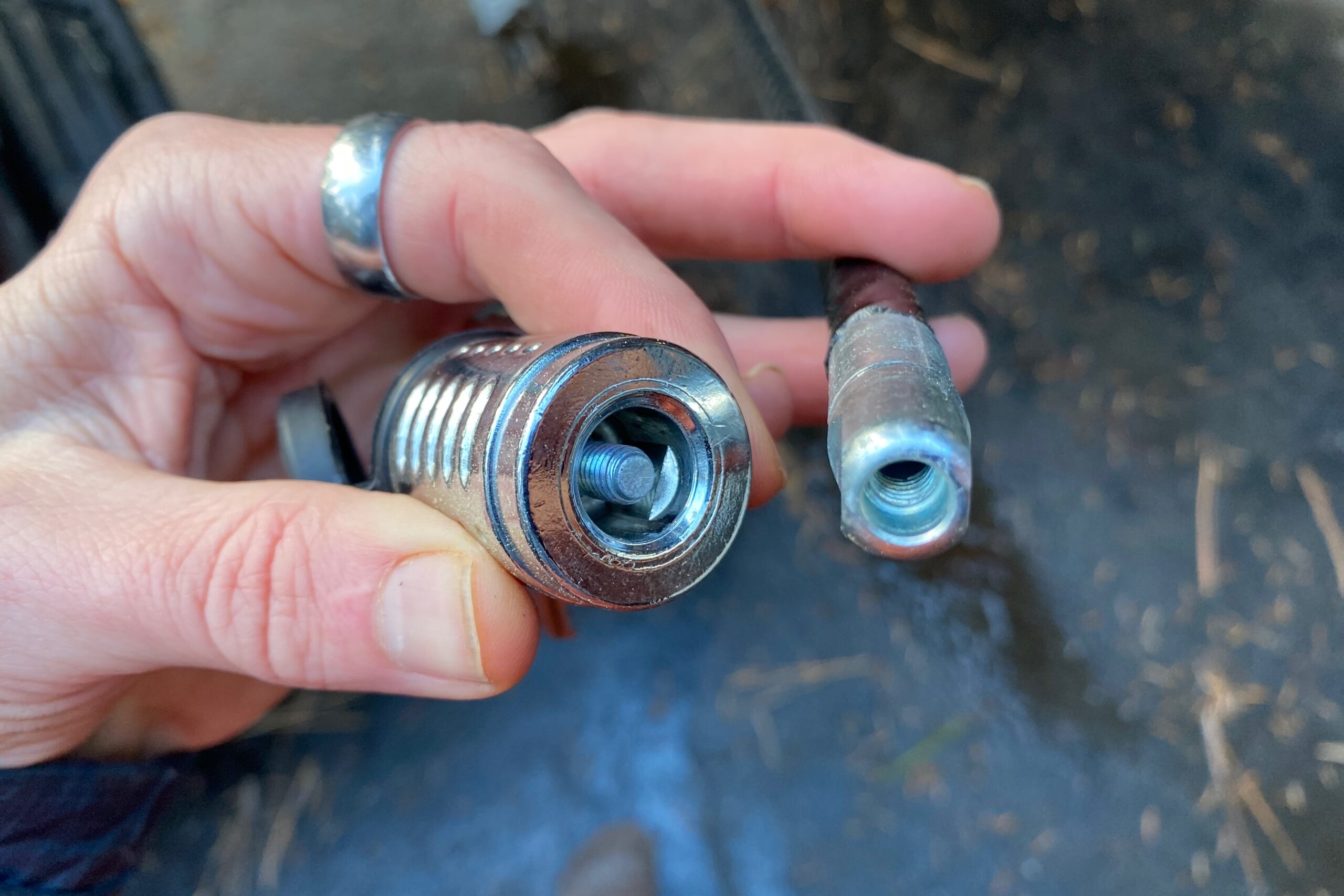
Security
Other than the locking hitch pin, the Recon racks don’t come with any other locks. There is a large steel lock loop welded to the vertical mast where you can attach any other aftermarket lock you like. 1Up sells a Recon-specific cable lock ($52) that integrates relatively nicely with the rack. If you purchase the cable lock with your rack, then the hitch pin and the cable lock pods will come keyed alike, which is nice.
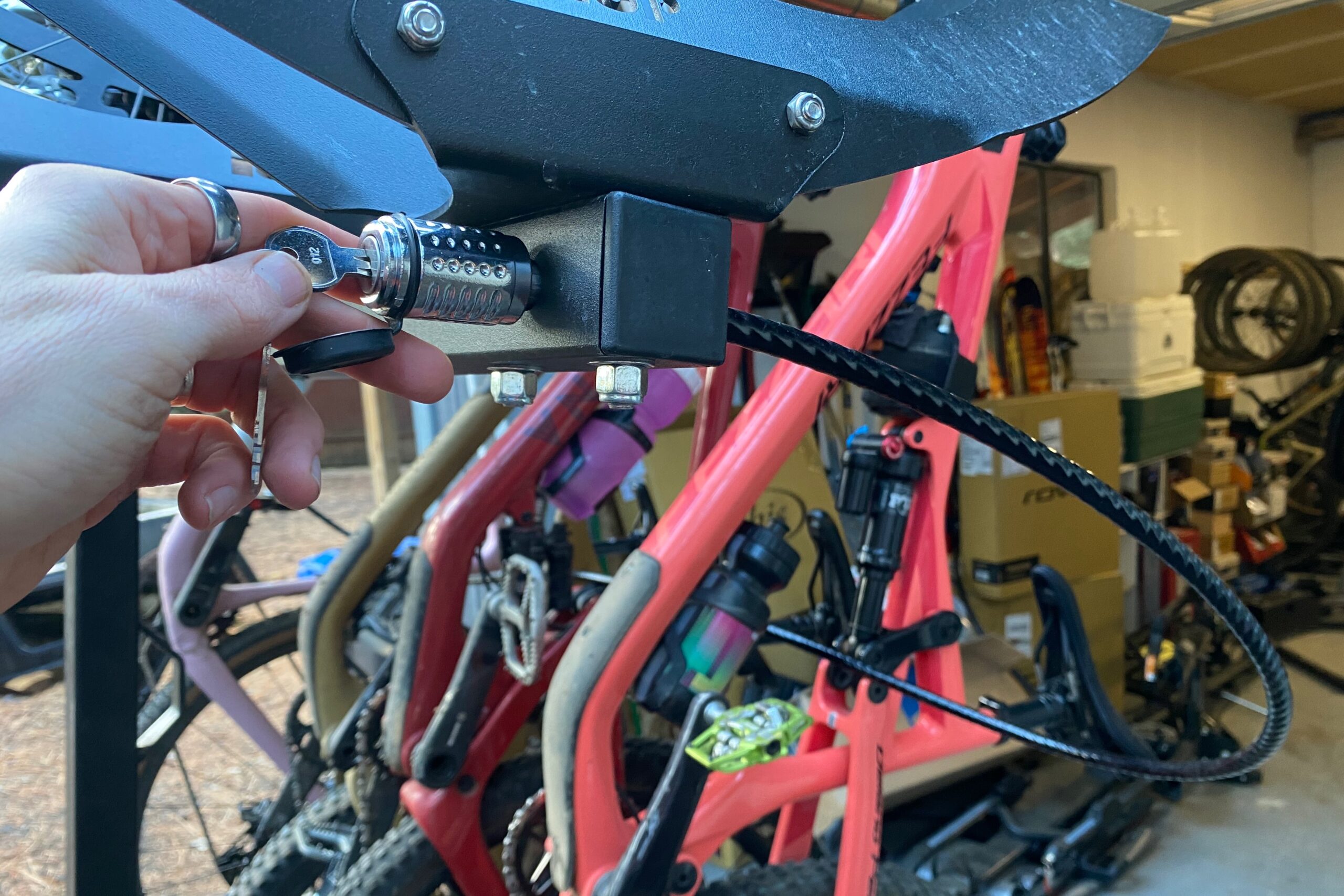
The lock is a nine-foot-long, 12mm diameter (including the coating) cable with a stopper on one end and the lock pod on the other, and it feeds through holes on both ends of the upper crossbar. Slide the cable all the way through one of these holes, pass it through the bike frames, and slide the lock pod end (with the lock pod off, obviously) through the hole on the other end. Attach the lock pod, a metal thread-on lock the same as the hitch pin, to the end of the cable and you’re done. Of course, no lock is infallible, but this thick cable will do wonders to deter opportunistic thieves from an easy grab-and-run. I found the best way to store the lock when not in use was to just leave it locked on the rack. By passing it through the lock loop, it stays out of the way even if it doesn’t have the cleanest look.
Tilt
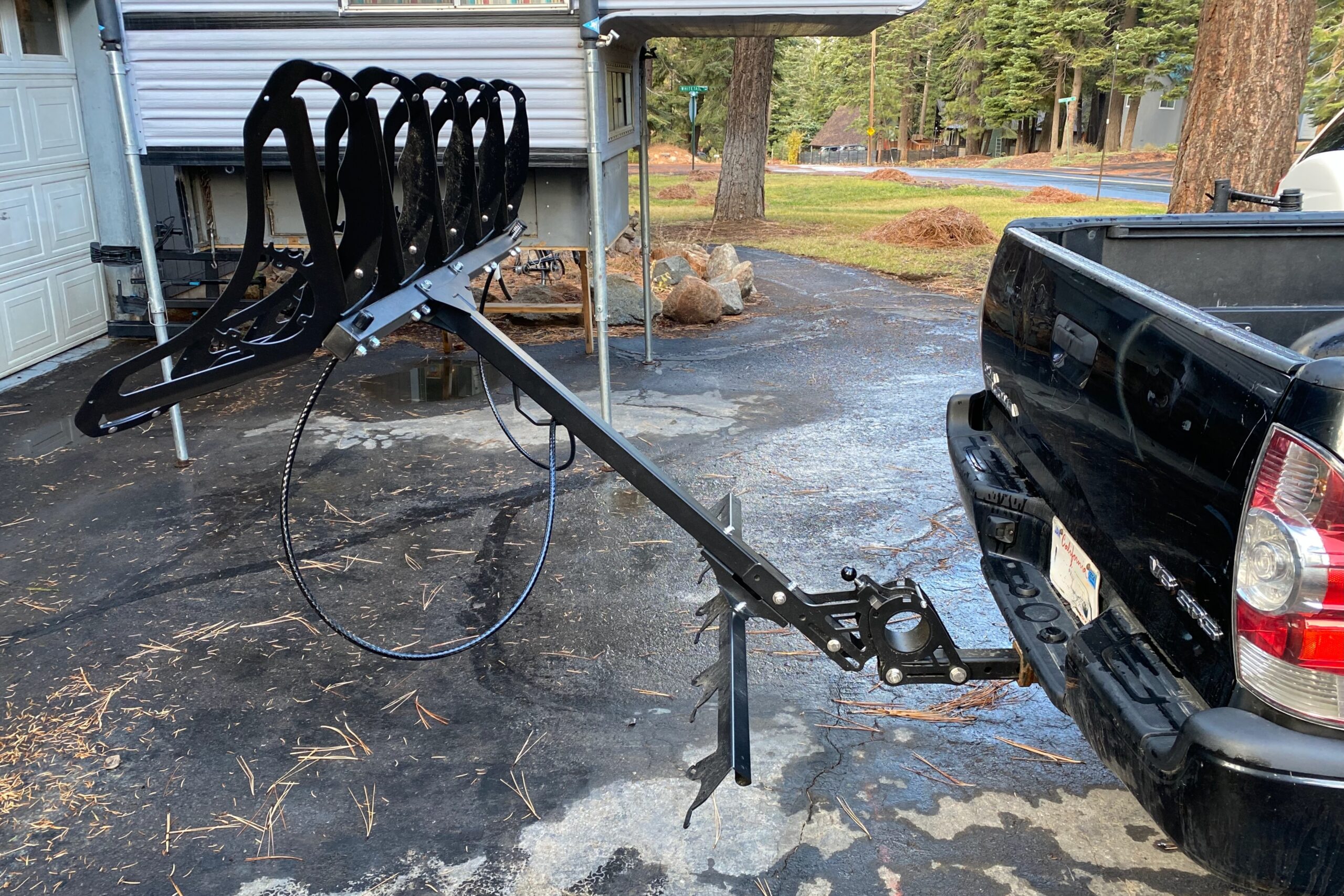
1Up kept the Smooth Pivot Operation of the original Recon racks and the oversized pivot point that forms the junction between the hitch bar and the vertical mast. And, given the 6mm thick steel plates on either side of this pivot, it is super sturdy and one of the reasons this rack is so stable. Pulling up on the small black knob at the top of the pivot releases a thick metal bar from the steel side plates and allows the rack to tilt away from the vehicle at approximately a 40-degree angle. This allows access to the rear of the vehicle whether you need to open your tailgate or trunk, or in my case, open the rear door on my old camper.
The pivoting action of the Smooth Pivot is, in fact, very smooth. You can tilt it down with bikes on the rack, just be ready to support the weight when you do so, and be sure you have adequate clearance for the rear tires. I personally only used this feature without any bikes loaded as the long enduro bike I’ve been riding most frequently would make contact with the ground when tilted. Regardless, the tilt feature works quite well and provides plenty of space for rifling around in your trunk while looking for the gloves you accidentally left at home.
Versatility
The design of the Recon racks, and the wheel baskets in particular, make it very versatile in terms of bike fit. The standard baskets fit wheel sizes between 24 and 29 inches and tires up to 3 inches wide. This means you can carry not just mountain bikes, but gravel or road bikes too, something the fork-hold models can’t typically do. As mentioned previously, you also have the option to mix and match between standard (tires up to 5.1 inches wide) and Kids (wheel sizes 20 to 24 inches up to 3 inches wide) baskets when checking out, or you can purchase them separately if your carrying needs change seasonally or over time.
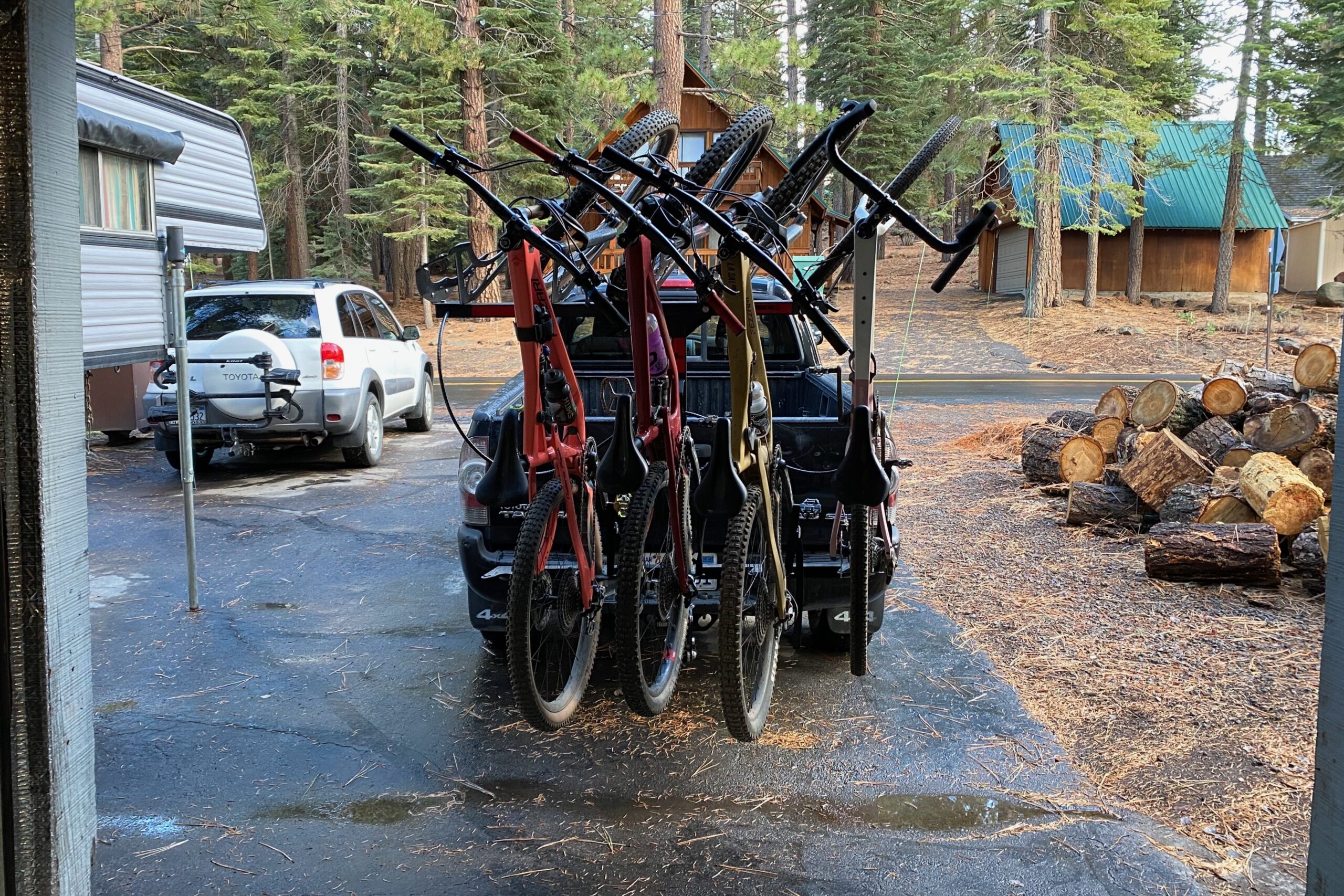
The Recon Racks have a 45 lbs per bike weight limit and a total weight capacity of 225 or 270 lbs for the Recon 5 and Recon 6, respectively. That’s easily enough to handle virtually all non-electric bikes and lightweight eMTBs, although most full-power eMTBs will be slightly over that limit. That said, it certainly feels more than capable of handling heavier bikes, though we’d recommend staying within its claimed limits.
Given the weight of the rack itself and the leverage exerted on the hitch bar, the Recon racks only come in the 2-inch receiver size.
Storage

An issue that plagues most hitch bike racks but especially vertical carry models is their size and storability. Off the vehicle, the Recon 5 is 62 inches tall, 58 inches wide, and 34 inches deep. It doesn’t stand up on its own and it takes up a lot of space wherever you choose to store it. A wall-mounted rack dock or something like 1Up’s Rack Stand is pretty critical to keep the Recon out of the way and your storage space tidy.
I had the chance to use the 1Up Rack Stand ($310) which provides a stable base to hold the rack upright, while also serving as a system to roll the rack across smooth surfaces to get it closer to the vehicle or reposition it in your garage. Although 1Up doesn’t specifically say it can do it, I found you can also use the rack in the Rack Stand to hold a bike or two, maybe three depending on their weight, but I found it could get a little tippy with three 30+ lb mountain bikes loaded. Either way, it’s an awesome accessory to have, albeit a little expensive.
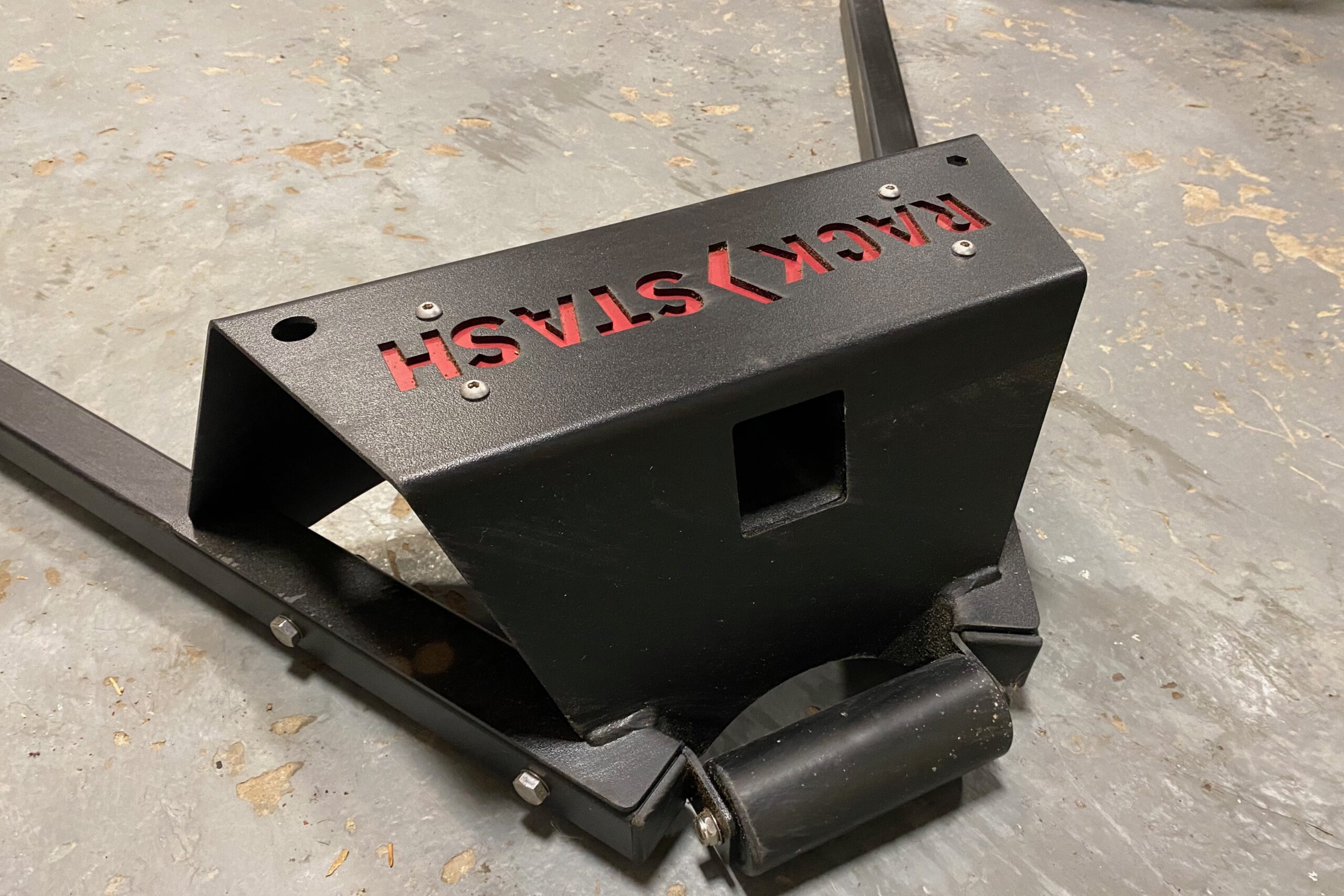
Accessories
I mentioned several of the accessories available for the Recon racks already, but here’s a little recap, plus a few more. All of the wheel baskets, standard, fat bike, and kids, can be purchased separately for $149. The nine-foot-long Recon cable lock sells for $52 and integrates relatively well with the rack. The Rack Stand will set you back $310, but it’s a great way to store the rack when not in use and it makes moving the rack around a heck of a lot easier. They also sell a Bottle Holder for $22 that mounts to the back of the lower crossbar and has a bottle opener for those post-ride beverages.
1Up also says that the Recon racks can be used with their hitch extenders, hitch bar stop, and the RakAttach swing-away attachment.
Durability
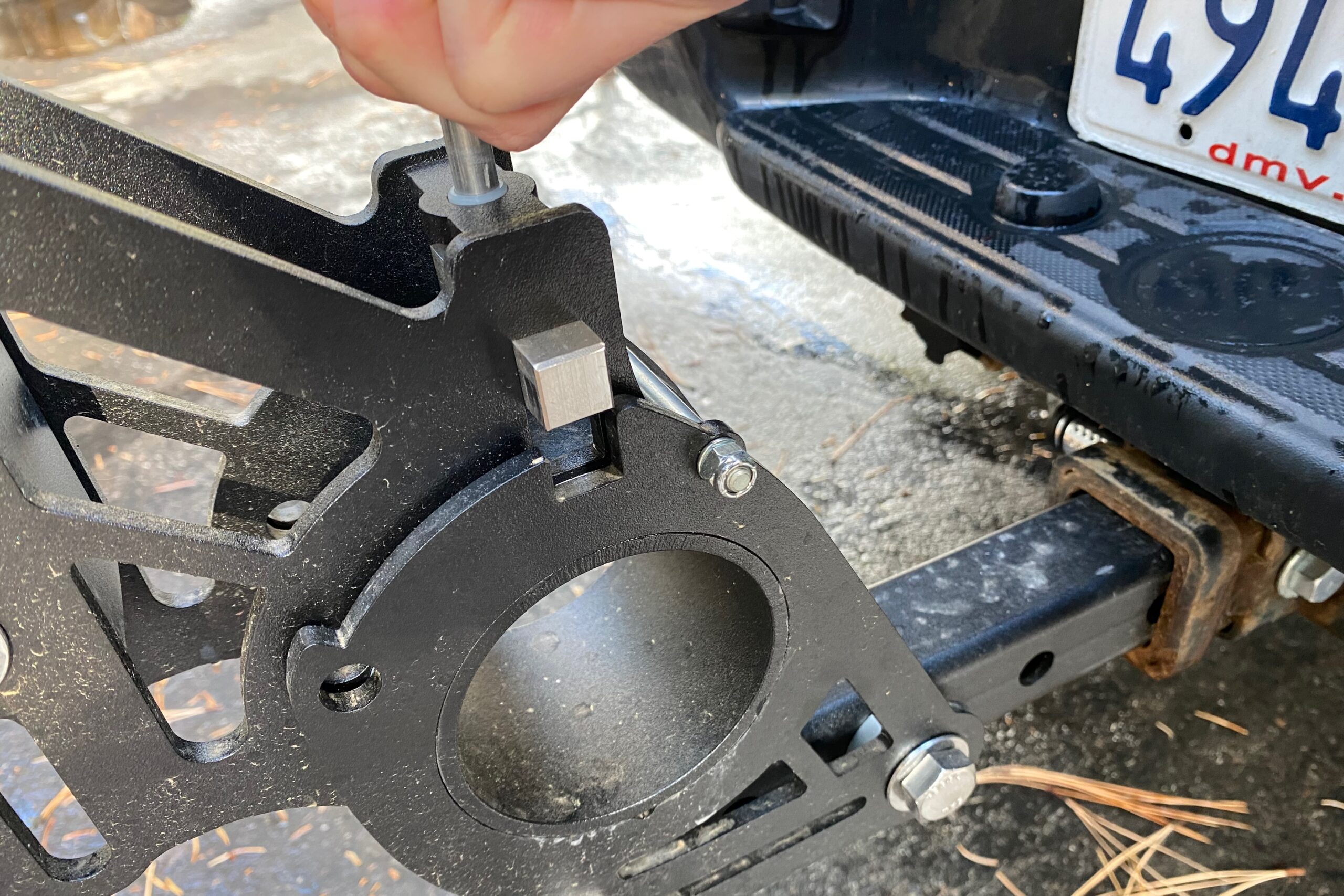
1Up bike racks are renowned for their durability and that continues with the Recon racks. The entire thing is made from steel and it feels absolutely bomb-proof. The steel side plates at the pivot junction are 6mm thick and held together with beefy hardware. Even the wheel baskets are cut from 3mm thick steel plates. All of the metal is also covered with a durable, black powder-coat finish to protect it from corrosion and the hardware is all standard sizes that should be easy to find at your local hardware should you ever need to replace it.
If you’re driving off-road regularly, you will be subjecting the rack to additional stress, but given the materials used in its construction, I don’t see it being a problem at all. With the additional bouncing and jostling of rough roads, however, you’ll want to check the bolts a little more often to make sure everything stays nice and tight.
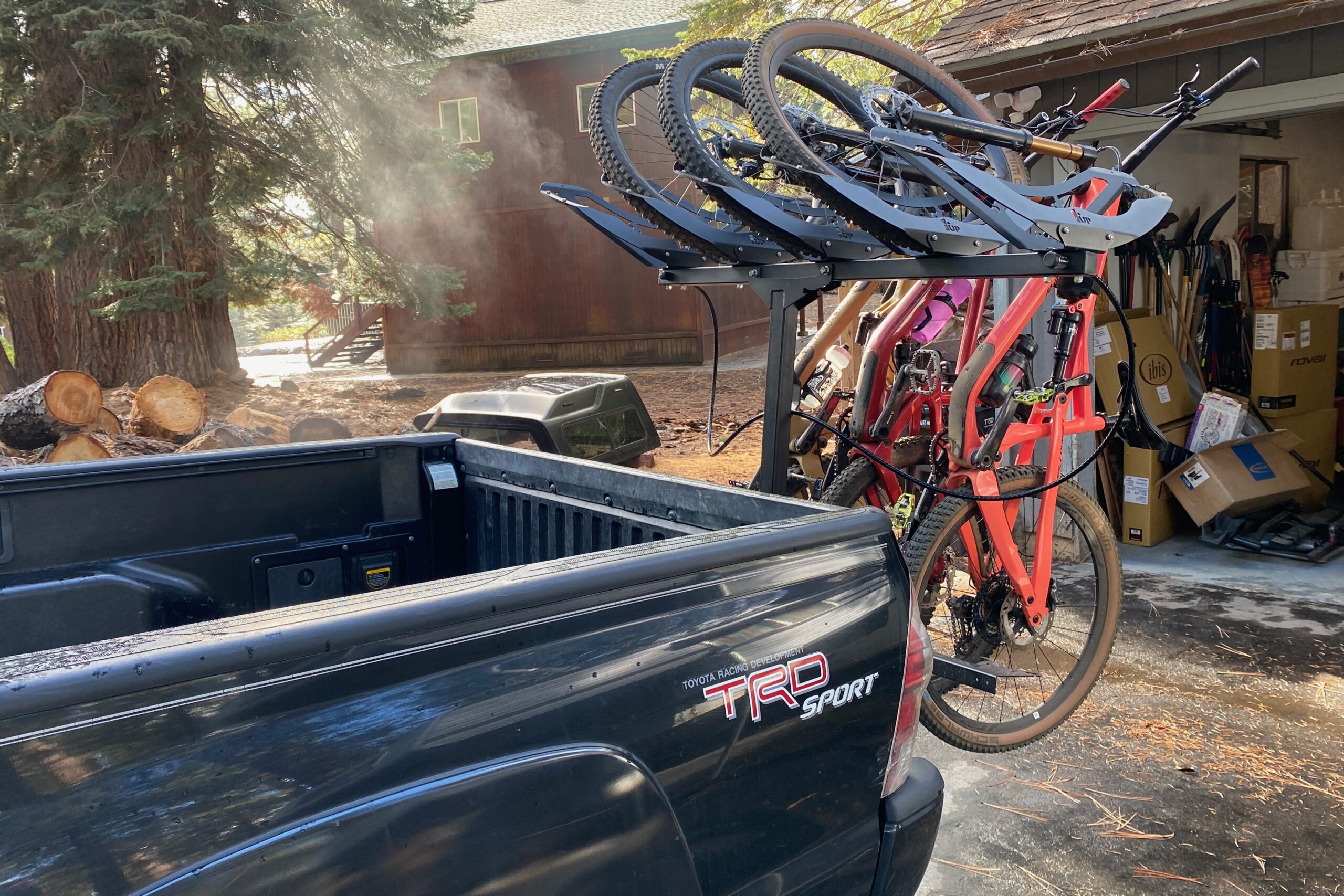
Price
There’s no looking past the price of the 1Up Recon racks. At $1,200 for the Recon 5 and $1,400 for the Recon 6 (prices include ground shipping), there’s no denying that they are quite expensive. But when you consider the price of tray racks plus the add-ons needed to carry 4 bikes, it starts to seem more reasonable. Take, for example, the Thule T2 Pro XTR ($800) and the 2-bike add-on ($550), and you’re looking at $1,350 and you’re maxed out at 4 bikes. The prices of other tray rack models that can use add-ons are quite similar to the Thule, except for the Kuat Piston Pro X which is significantly more expensive.
Perhaps a better price comparison is against the VelociRAX vertical hitch racks. The VelociRAX come in 3, 4, 5, 6, and 7 bike versions, with retail prices ranging between $799 and $985. Looking at the 5-bike version specifically, it goes for $885, and standard shipping is another $120, give or take, bringing the price before tax up to just over $1,000. So, you can definitely save a little money by going with the VelociRAX, the hydraulic tilt assist function is a pretty cool feature, and the 55 lbs per bike weight limit can handle full-power e-bikes. I personally don’t own any electric bikes, don’t particularly care for the red color, and the lack of mast height adjustability may be a limiting factor for some people. Regardless, the VelociRAX work very well, are super versatile, and are arguably the best value for this style of rack.
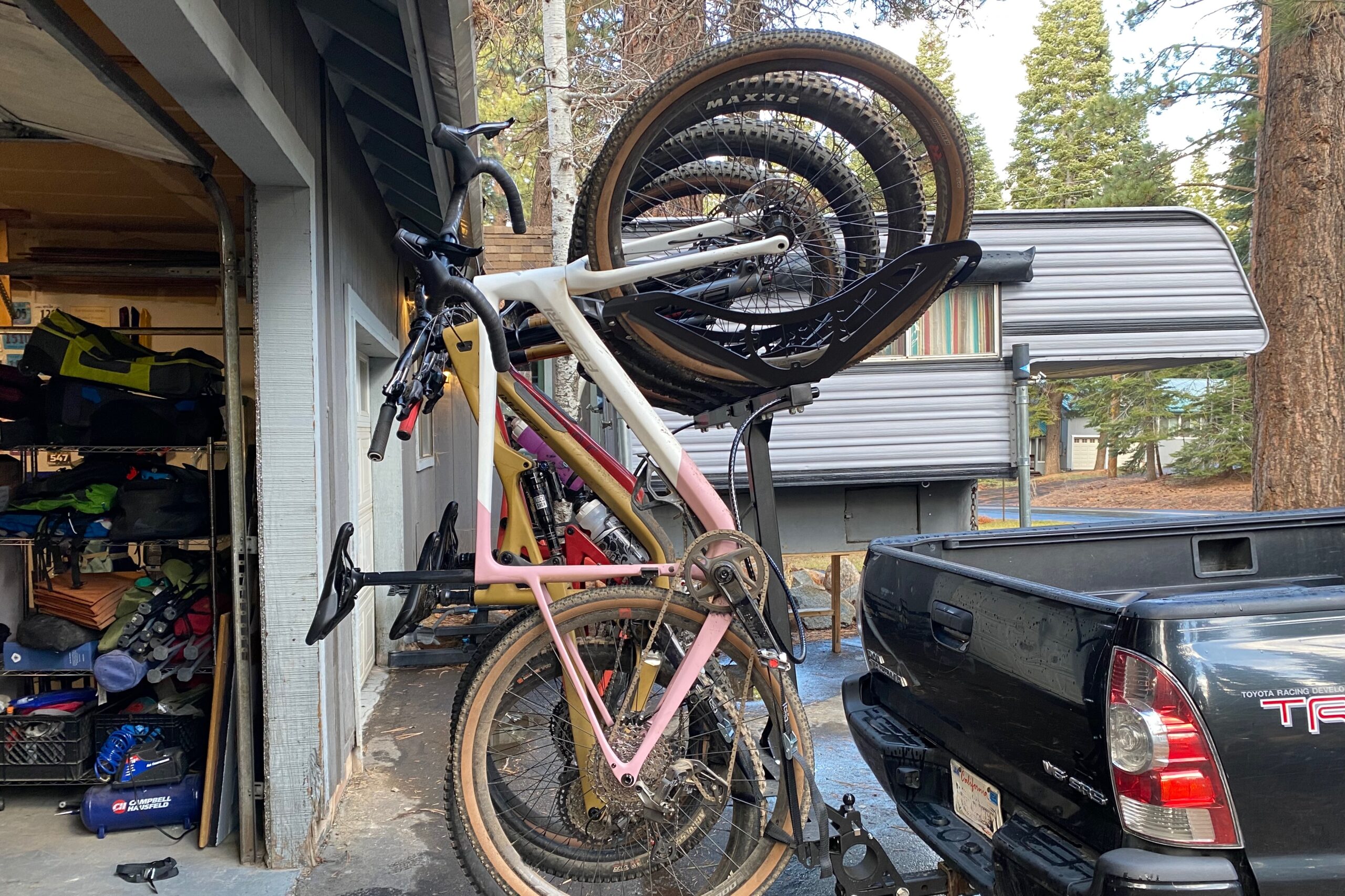
Final Thoughts
The Recon Racks bring 1Up’s legendary durability to the vertical carry design. With a sturdy steel construction and front-wheel baskets with a versatile bike fit, you can load up the whole family’s bikes for weekend getaways or rally the crew up janky dirt roads for shuttle laps. Assuming you don’t need to transport full-power electric bikes, the Recon is super stable, holds bikes very securely, and the off-road rating means you can take it on any adventure you choose. Yes, it’s expensive, but the Recon’s durable construction and lifetime warranty make it a solid investment that’ll be paying dividends for years to come.
The Recon Racks come with 1Up’s 100% lifetime warranty protection.
1Up Recon Rack Specs
- Fits 2” receiver
- Black powder coat finish
- Standard Wheel Baskets hold 24”-29” wheels, up to 3” wide tires
- Fat Bike Wheel Baskets hold 24”-29” wheels, up to 5.1” wide tires
- Kids Bike Wheel Baskets hold 20”-24” wheels, up to 3” wide tires
- Recon 5 carrying capacity of 225 lbs (45 lbs per bike spot)
- Recon 6 carrying Capacity of 270 lbs (45 lbs per bike spot)
- Road rating: Pavement, Gravel, and Off-road
- Vehicle rating: Passenger Vehicle
- Wheel Basket Design holds tires safely and securely with no bike frame contact
- Compatible with suspension and rigid forks
- Integrated adjustability for easy reach and ground clearance tuning
- Smooth Pivot Operation for easy access to rear of vehicle
- RakAttach, Hitch Extenders and Hitch Bar Stops are acceptable
- Shipping Dimensions: Tubing Box 64″ x 13″ x 4.5″ / Basket and Pivot Box 30.5″ x 18″ x 8″
- Recon 5 Shipping Weight: Tubing Box 39 lbs / Basket and Pivot Box: 55 lbs
- Recon 6 Shipping Weight: Tubing Box 43 lbs / Basket and Pivot Box: 61 lbs
